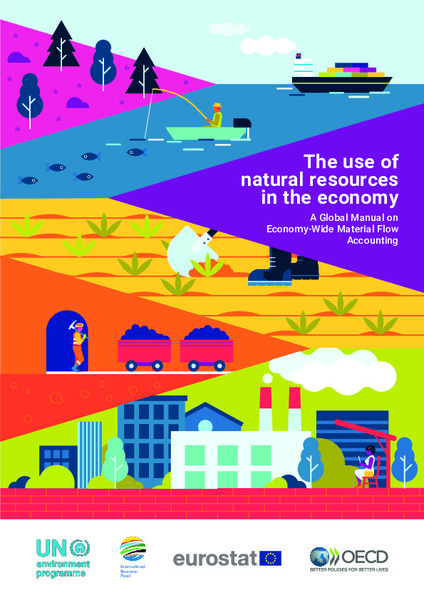

The United Nations Environment Programme offers a wide variety of reports. The SDG and Environment Statistic’s Unit spearheads the UN-wide monitoring and reporting on the environmental dimension of the 2030 Agenda and the SDGs. The unit publishes methodological documents, in-depth guidelines and progress reports on waste, gender and the environment, material flow accounts and many SDG indicators.

The latest available data and estimates for 92 environment relevant SDG indicators tell us that the world is not on track to achieve the environmental dimension of the SDGs by 2030.

MFA data sets and indicators are part of the work programme of a growing number of national statistical offices globally and the global application of EW-MFA accounts in national statistics, beyond Europe, has required the creation of a global guidance manual.

This report aims to provide guidance on how to bring together traditional monitoring techniques with new technologies and data science in order to better monitoring our oceans in the context of the SDGs.

The Global Chemicals and Waste Indicator Review Document aims to strengthen the knowledge base of chemicals and hazardous waste and enhance the capacity of selected countries to track progress towards related SDG indicators across sectors.

Progress toward the achievement of the environmental dimension of the SDGs is the first step in helping governments and other stakeholders assess where related actions and governance arrangements are working.

Food waste reduction offers multi-faceted wins for people and planet, improving food security, addressing climate change, saving money and reducing pressures on land, water, biodiversity and waste management systems. Yet this potential has until now been woefully under-exploited.

In order to measure fossil fuel subsidies at the national, regional and global level, three sub-indicators are recommended for reporting on this indicator: 1) direct transfer of government funds; 2) induced transfers (price support); and as an optional sub-indicator 3) tax expenditure, other revenue foregone, and under-pricing of goods and ervices (as summarised in the table below).

Did you know that only 23% of the environment-related SDG indicators are on track to meet the target if current trends continue? For 68%, there is not enough data to assess progress and for 9% there is not progress toward achieving the target.

As we approach the final decade before the Sustainable Development Goals (SDG) are to be achieved in 2030 a huge step-up is required on all fronts if the world is to achieve its targets and reverse the climate and species crises. Currently, about a quarter of the world’s land is degraded. Land restoration and rehabilitation together represent one of three primary strategies for achieving SDG 15 (Life on Land), and particularly for meeting the land degradation neutrality target under that goal (15.3).

Gender equality and women’s empowerment are globally recognised priorities, matters of fundamental human rights, and prerequisites for sustainable development (IUCN, 2018; World Economic Forum, 2015). Understanding the gender environment nexus is not only key to understanding social and environmental inequities and barriers to sustainable development, but to unlocking options for transformative action, as well.
Sustainable Development Goal (SDG) synergies embody the interconnectedness of the global agenda for sustainable development. By recognizing and leveraging the interlinkages between different SDGs, nations can amplify their efforts towards achieving multiple goals simultaneously, leading to more efficient and impactful outcomes. Synergies between SDGs promote holistic approaches to addressing complex challenges such as poverty, inequality, climate change, and environmental degradation.
The Sustainable Development Goals Policy Briefs highlight a hotspot of environmental change. The evidence provided builds on the scientific data and information hosted on Environment Live and is complemented by stories from the regions. A significant lack of data has corresponded to a lack of investment toward achieving the environmental dimension of the SDGs. Currently, 68% of the environment-related SDGs do not have sufficient data at the global level to assess progress. If current trends continue, the world is on track to meet only 17% ...